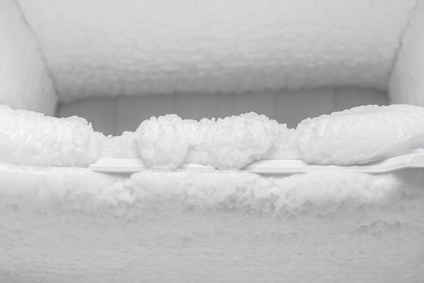
Remember your last “I Love Lucy” moment? Maybe it was that time when you, or one of your kids, left the freezer door ajar for a few hours? If so, you remember that, besides keeping things cold, your freezer coil is really good at condensing humidity out of the air and storing it as a big ice block!
But even during normal operation, accumulated frost must be periodically removed. This “defrost” process can be expensive. In supermarkets, which are some of the heaviest users of electricity (40-60 kWh/sqft), this defrost energy can be a big deal.
A supermarket has dozens of refrigerated and frozen food cases. Supermarket operators avoid frozen coils by keeping air in the store dry and by purchasing equipment that periodically melts accumulated frost. The downside is that defrost consumes extra energy and heats up freezer compartments. This extra, unwanted heat must then be removed by refrigeration equipment and can lower the shelf life of food.
There are two ways to alleviate this: Install air barriers or cases with barriers such as doors or strip curtains, and efficient defrosting.
So-called “medium temperature cases” (with temperatures generally above freezing) are relatively easy to defrost and are not a very large energy burden. On the other hand, defrosting low temperature, frozen-food cases requires a more aggressive approach. Accumulated ice is typically melted by electric heaters located nearby or integral with the freezer coils. Heaters may turn on one to four times a day for fifteen minutes to an hour—regardless of how much frost is present. The energy savvy know heating with electricity is expensive. To heat indiscriminately (whether it is needed or not) is worse.
Two better alternatives are:
- For new construction and refrigeration system replacement, re-direct hot refrigerant through a separate piping circuit from the outlet of the compressor through the inside of the frosty coil’s tubes; a defrost method called hot gas defrost.
- Automatically turn off electric heaters as soon as frost has been melted (a timer starts defrost at regular intervals, but the length of defrost is controlled by a temperature sensor or other device.). Defrost off-peak when possible.
Each approach features its own positives and negatives, but in terms of saving energy both methods are effective. Both typically have paybacks on incremental cost of just a few years.
Summary: Defrost is one of those “invisible” technologies that keeps supermarket cases running. Because much defrost of low-temperature cases is electric, it is expensive and should be controlled carefully.




